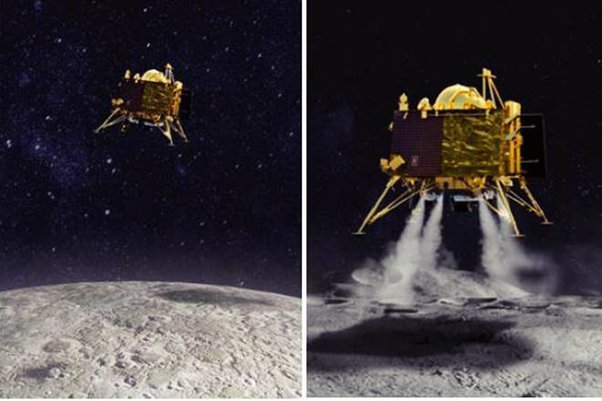The Genesis of Chandrayaan-3: Unveiling India’s Lunar Ambitions and Vajpayee

As Chandrayaan-3 readies itself for a historic lunar landing, there’s a captivating narrative behind its origin and the name it proudly bears. The journey of this lunar mission begins back in 1999, when the Indian Prime Minister was Atal Bihari Vajpayee. Beyond just granting governmental approval for a lunar mission, Vajpayee’s influence extended to rechristening the endeavor itself, marking a significant shift in its trajectory.
The initial choice for the mission’s name was ‘Somayaan,’ which drew inspiration from a Sanskrit verse that conveyed the sentiment of intellectual pursuit and seeking enlightenment. The verse went: “O Moon! We should be able to know you through our intellect. You enlighten us through the right path.” The term ‘Somayaan’ encapsulated this essence, reflecting the mission’s aspiration to explore and understand the moon through human intellect.
However, Vajpayee, a man of diverse talents, including a command over Sanskrit, believed that the mission deserved a name that resonated with India’s growing stature as an economic powerhouse. He propelled the renaming of the mission to ‘Chandrayaan,’ where ‘Chandra’ signifies the moon. This shift from ‘Somayaan’ to ‘Chandrayaan’ raised eyebrows within the space community, marking a defining moment in the mission’s history.
Dr. K. Kasturirangan, the chairperson of the Indian Space Research Organisation (ISRO) at that time, vividly recalled the turn of events. He narrated that during a meeting in New Delhi in May 1999, where the nation was commemorating the first anniversary of Pokhran II, Vajpayee made the decision to name the mission ‘Chandrayaan.’ Kasturirangan highlighted that Vajpayee’s reasoning was rooted in India’s emergence as an economic powerhouse, set to embark on numerous exploratory journeys, including those to the moon.
The inception of the Indian lunar mission was not a spontaneous occurrence; it was the culmination of discussions and deliberations within scientific forums. In 1999, discussions within the Indian Academy of Sciences sparked the concept of an Indian lunar mission. These conversations extended into the Astronautical Society of India in 2000, further fueling the idea’s development.
Guided by insights provided by experts in these forums, ISRO established the National Lunar Mission Task Force, a collective of distinguished scientists and technologists. This task force embarked on intensive discussions to ascertain the feasibility, objectives, and specifics of an Indian moon mission. Their deliberations encompassed potential scientific advancements, international lunar interest, and the exploration of challenges beyond the familiar Geostationary Orbit.
After thorough and comprehensive exchanges, a unanimous consensus emerged that India should indeed venture into lunar exploration. This consensus was bolstered by the burgeoning curiosity about the moon on a global scale and the scientific prospects it held.
In November 2003, the Government of India gave its official approval to ISRO’s proposal for India’s inaugural lunar mission. This marked a significant milestone, as it paved the way for Chandrayaan-1 to make its monumental journey.
The culmination of these efforts was marked by a historic announcement made by Prime Minister Vajpayee. Addressing the nation from the Red Fort on India’s 56th Independence Day in 2003, he unveiled India’s ambitious moon exploration plan—Chandrayaan 1. With pride, he proclaimed, “Our country is now ready to fly high in the field of science. I am pleased to announce that India will send her spacecraft to the moon by 2008. It is being named Chandrayaan.”
As Chandrayaan-3 embarks on its lunar landing, the echoes of its inception continue to resonate—a testament to the power of vision, collaboration, and a determination to reach for the stars, or in this case, the moon.
News Mania Desk / Agnibeena Ghosh 23rd August 2023






